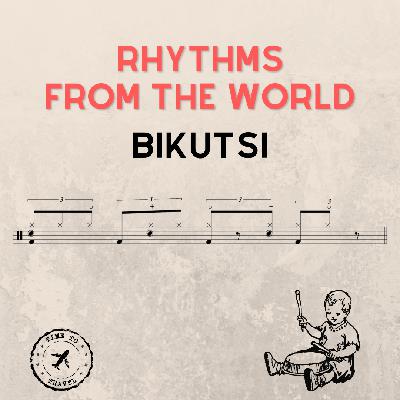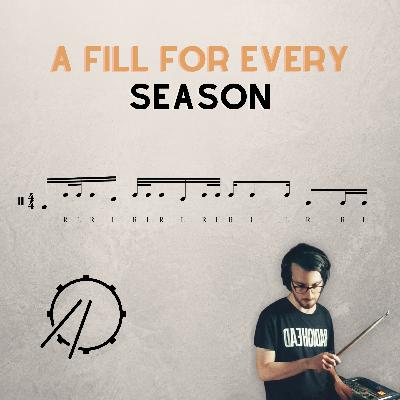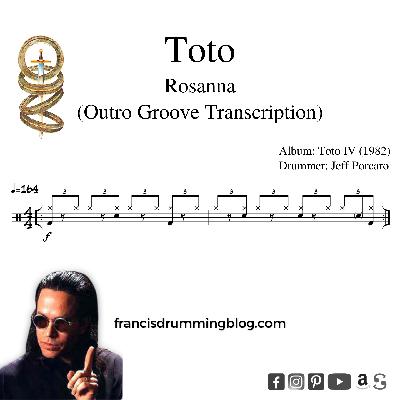Rhythms From the World #5 – Bikutsi
Description
Listen to this article
<figure class="wp-block-audio aligncenter"></figure>
Table of Contents
Introduction
Bikutsi is a Cameroonian music genre originating from the Beti, an ethnic group in and around the capital city Yaoundé. Meaning “beat the earth,” it features insistent cross-rhythms and a driving triplet feel, often counted in 12/8 or 6/8 time. Traditionally played at important community gatherings such as weddings and festivals, Bikutsi emphasizes cultural unity and joyful expression.
In its traditional form, the balafon (a wooden xylophone) and stomping bodies provide the pulse. In the urban electrified era, artists modernized the sound—the timbre of the balafon was imitated on a muted or electric guitar. Musicians achieved the “balafon-like” thunk (a dry, percussive, wooden-sounding note, rather than a resonant guitar tone) by damping the guitar strings.
<figure class="wp-block-gallery aligncenter has-nested-images columns-default is-cropped is-style-columns wp-block-gallery-2 is-layout-flex wp-block-gallery-is-layout-flex">
<figure class="wp-block-image size-large">
 </figure>
</figure><figure class="wp-block-image size-large">
 </figure>
</figure></figure>
Guitarists such as Martin “Martino” Atangana brought authentic Bikutsi phrasing into contemporary ensembles, influencing many musicians to incorporate its rhythms and phrasing. Bands like Les Têtes Brûlées expanded their international appeal in the 1980s with an electrified, percussive style. Over time, Bikutsi absorbed elements from global pop and rock music, integrating electric instruments, catchy melodies, and song structures that broadened its audience and modernized its sound. This synthesis not only revitalized this genre but also positioned it within the broader global music scene, showcasing its adaptability and enduring appeal.
Instrumentation
Bikutsi ensembles typically combine melodic percussion, rhythm instruments, strings, and vocal elements.
- Balafon (wooden xylophone): original melodic backbone; bright, percussive tones that outline melodies and rhythms.
- Hand drums and rattles: traditional pulse and texture; add syncopation and drive.
- Dancers’ stamping/body percussion: provides a low-end, percussive foundation and visual energy.
- Electric guitar (damped/muted): modern substitute for the balafon; played percussively to accent rhythm and timbre.
- Bass guitar: anchors the low groove and reinforces cross-rhythmic patterns.
- Drumset: adapts traditional rhythms to drum kit format (bass drum, snare/cross-stick, toms, hi-hat, ride cymbal).
- Keyboards/Synths: supply harmonic pads or emulate traditional timbres.
- Vocals, whistles, and shouts: lead call-and-response, punctuate phrases, and heighten dance atmosphere.
Drumset Adaptation
A practical drumset adaptation treats the groove as a 12/8 cycle, but written in 4/4 time. First, play a steady 8th-note triple pattern on the hi-hat without rest, establishing a solid “four-on-the-floor” bass drum pattern. Next, play the hi-hat pattern as notated, creating a group of 4 with 3 notes and a rest. Finally, add the cross-stick or snare at the beginning of the group every four notes, creating a 4-over-3 polyrhythm.
<figure class="aligncenter size-large">
 <figcaption class="wp-element-caption">Bikutsi Groove 1</figcaption></figure>
<figcaption class="wp-element-caption">Bikutsi Groove 1</figcaption></figure><figure class="aligncenter size-large">
 <figcaption class="wp-element-caption">Bikutsi Groove 2</figcaption></figure>
<figcaption class="wp-element-caption">Bikutsi Groove 2</figcaption></figure>Start at a slow tempo, then gradually increase the tempo, experimenting with moving the snare to the toms for a more authentic, earthy feel. It’s essential to count the quarter note pulse aloud to figure out and understand the polyrhythmic figure that occurs between the hand and foot part.
Practice Tip: Instead of using a 12/8 or 6/8 time signature, to further facilitate learning and notational clarity, I suggest writing African rhythms in 4/4 with a triplet subdivision (similar to jazz, except that the emphasis is on all four beats). That way, we are closer to maintaining a strong “on the beat” feel of those rhythms. At the same time, one should be aware of the 12/8 way of counting; in fact, feeling both divisions at the same time is at the heart of African music.
<figure class="wp-block-video aligncenter wp-block-embed is-type-video is-provider-videopress">
In the following groove variation, we use a Bembe clave pattern on the bass drum, omitting the second 8th note on beat 2. The cymbal pattern, common in African music, consists of the first two 8th notes and can be played on the ride, ride bell, or floor tom rim/shell. The snare plays a counter-rhythm derived from the clave itself. This groove variation comes from a Drumeo video lesson on Bikutsi by drummer Jessica Burdeaux.
<figure class="aligncenter size-large">
 <figcaption class="wp-element-caption">Bikutsi Groove Variation</figcaption></figure>
<figcaption class="wp-element-caption">Bikutsi Groove Variation</figcaption></figure><figure class="wp-block-embed aligncenter is-type-video is-provider-youtube wp-block-embed-youtube wp-embed-aspect-16-9 wp-has-aspect-ratio">
Additional Resources
Here is a selection of videos to listen to Bikutsi. When watching and listening to these videos, focus on the groove and rhythmic patterns that define this music. Pay attention to the interplay between instruments, such as the balafon and percussion or the guitar and drums, and how they shape the overall sound. Additionally, observe the role of dancers, whose movements enhance the musical experience and add a visual component to the rhythm.
<figure class="wp-block-embed aligncenter is-type-video is-provider-youtube wp-block-embed-youtube wp-embed-aspect-16-9 wp-has-aspect-ratio">
<figure class="wp-block-embed aligncenter is-type-video is-provider-youtube wp-block-embed-youtube wp-embed-aspect-4-3 wp-has-aspect-ratio">
<figure class="















